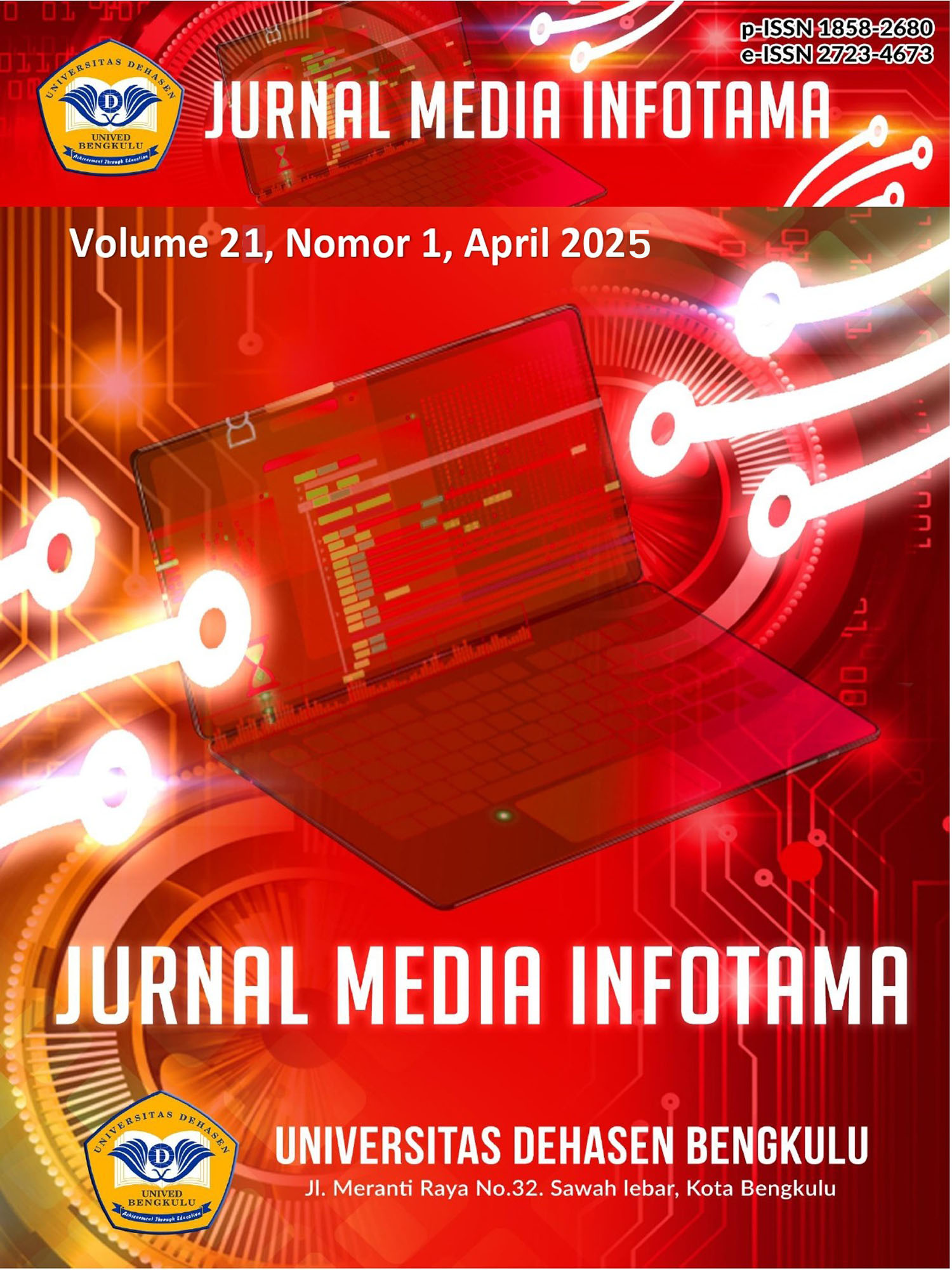Klasterisasi Data Karyawan Berdasarkan Penilaian Kinerja Menggunakan Metode K-Medoid
Abstract
Clustering Employee Data Based on Performance Appraisals Using the K-Medoid Method at the Regional Government Office of Central Bengkulu Regency can help employees to group employee performance data and can be used as a consideration to determine the results of employee performance evaluations each year. Grouping employee data based on the results of performance appraisals that have been carried out, namely the value of employee work targets (SKP) and work behavior values. The results of clustering on employee performance appraisal data, obtained 2 groups or clusters, namely high clusters (Cluster I) and low clusters (Cluster II). Clustering employee data based on performance appraisals using the k-medoid method at the Regional Government Office of Central Bengkulu Regency is made using the Visual Basic .Net programming language. Based on the tests that have been carried out, the functional of the application has run well and the application can help the Central Bengkulu Regency Regional Government Office in knowing employee performance based on 2 groups, namely high clusters and low clusters
Downloads
References
[2] Dinata, R. K., Safwandi, Hasdyna, N. & Azizah, N., 2020. Analisis K-Means Clustering Pada Data Sepeda Motor. Informatics Journal, Volume Vol.5 No.1 ISSN:2503-250X.
[3] Enterprise, J., 2019. Belajar Pemrograman Dengan Visual Studio. Jakarta: PT. Elex Media Komputindo.
[4] Fatma, I., Tambunan, H. S. & Rizki, F., 2022. Analisis Metode K-Medoids Cluster Dalam Mengelompokkan Siswa Yang Berprestasi. BUlletin of Informatics and Data Science, Volume Vol.1 No.1 ISSN:2580-8389.
[5] Febianto, N. I. & Palasara, N. D., 2019. Analisis Clustering K-Means Pada Data Informasi Kemiskinan di Jawa Barat Tahun 2018. Jurnal Sisfokom, Volume Vol.8 No.2 2019.
[6] Firman, A., 2019. Analisis dan Perancangan Sistem Informasi. Surabaya: Penerbit Qiara Media.
[7] Fitriyadi, A. U. & Kurniawati, A., 2021. Analisis Algoritma K-Means dan K-Medoids Untuk Clustering Data Kinerja Karyawan Pada Perusahaan Perumahan Nasional. Jurnal KILAT, Volume Vol.10 No.1 e-ISSN:2655-4925.
[8] Helmud, E., 2021. Optimasi Basis Data Oracle Menggunakan Complex View Studi Kasus : PT. Berkat Optimis Sejahtera (PT.BOS) Pangkalpinang. Jurnal Informatika, Volume Vol.7 No.1 ISSN.2407-1730.
[9] Ibrahim, R. N., Hayati, M. N. & Amijaya, F. D. T., 2020. Penerapan Algoritma K-Medoids pada Pengelompokan Wilayah Desa atau Kelurahan di Kabupaten Kutai Kartanegara (Studi Kasus : Data Hasil Pendataan Potensi Desa (PODES) Tahun 2018). Jurnal Eksponensial, Volume Vol.11 No.2 ISSN:2085-7829.
[10] Jollyta, D., Ramdhan, W. & Zarlis, M., 2020. Konsep Data Mining Dan Penerapan. Yogyakarta: Penerbit Deepublish.
[11] Kadarsih & Pujianto, D., 2022. Step By Step Belajar Database MySQL Untuk Pemula. Tangerang Selatan: Pascal Books.
[12] Kusuma, P. D., 2020. Machine Learning Teori, Program dan Studi Kasus. Yogyakarta: Penerbit Deepublish.
[13] Plaza, M. A. J., 2021. Desain Basis Data. Yogyakarta: Deepublisher ISBN:978-623-02-2338-9.
[14] Prianto, C. & Bunyamin, S., 2020. Panduan Pembuatan Aplikasi Clustering Gangguan Jaringan Menggunakan Metode K-Means Clustering. Cetakan Pertama penyunt. Bandung: Penerbit Kreatif Industri Nusantara.
[15] Saputra, E. A. & Nataliani, Y., 2021. Analisis Pengelompokan Data Nilai Siswa Untuk Menentukan Siswa Berprestasi Menggunakan Metode Clustering K-Means. Journal of Information Systems and Informatics, Volume Vol.3 No.3 e-ISSN:2656-4882.
[16] Suprapto, U., 2021. Pemodelan Perangkat Lunak (C3) Kompentesi Keahlian : Rekayasa Perangkat Lunak Untuk SMK/MAK Kelas XI. Jakarta: Grasindo.
[17] Wahyudi, M., Masitha, Saragih, R. & Solikhun, 2020. Data Mining : Penerapan Algoritma K-Means Clustering dan K-Medoids Clustering. Medan: Penerbit Yayasan Kita Menulis.
[18] Wanto, A. et al., 2020. Data Mining : Algoritma Dan Implementasi. Medan: Yayasan Kita Menulis.
[19] Yendrianof, D. et al., 2022. Analisis dan Perancangan Sistem Informasi. Medan: Yayasan Kita Menulis.
Copyright (c) 2025 Jodi Laksana Putra; Indra Kanedi, Abdussalam Al Akbar

This work is licensed under a Creative Commons Attribution-ShareAlike 4.0 International License.
An author who publishes in Jurnal Media Infotama agrees to the following terms:The author holds the copyright and grants the journal the right of first publication of the work simultaneously licensed under the Creative Commons Attribution-Share Alike 4.0 License which allows others to share the work with acknowledgment of the work's authorship and initial publication in this journal.Submission of a manuscript implies that the submitted work has not been previously published (except as part of a thesis or report, or abstract); that it is not being considered for publication elsewhere; that its publication has been approved by all co-authors. If and when a manuscript is accepted for publication, the author retains the copyright and retains the publishing rights without limitation.
For new inventions, authors are advised to administer the patent before publication. The license type is CC-BY-SA 4.0.
MEDIA INFORMATION REVIEW: Journal of the Faculty of Computer Science is licensed under a Creative Commons Attribution-ShareAlike 4.0 International License.You are free to:Share
— copy and redistribute material in any medium or formatAdapt
— remix, modify and develop materialfor any purpose, even commercial.
The licensor cannot revoke this freedom as long as you follow the license terms












.png)


